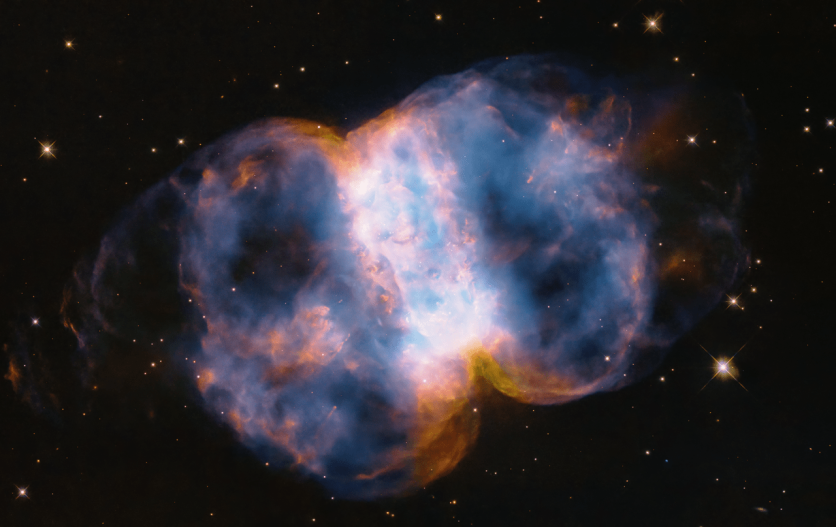NASA's Hubble Space Telescope commemorated its 34th year since its launch with a magical view of the Little Dumbbell Nebula, located approximately 3,400 light-years away in the constellation Perseus.
This nebula, known scientifically as Messier 76, M76, or NGC 650/651, has long captivated amateur astronomers due to its distinctive appearance.

Hubble Captures the Little Dumbbell Nebula
The Little Dumbbell Nebula is categorized as a planetary nebula, formed by the outward expansion of luminous gases discharged from a dying red giant star, according to NASA.
Despite its name, it is not related to planets; rather, it earned this title due to its resemblance to planetary bodies when observed through early telescopes in the 1700s.
This nebula exhibits a central bar structure surrounded by a ring, with two lobes extending from either side of the ring. NASA notes that the ring likely formed from material ejected by the dying star, possibly formed by the gravitational effects of a companion star orbiting it.
However, this hypothetical companion star is not visible in the Hubble image, suggesting the central star may have absorbed it.
The primary star collapses into a white dwarf, reaching temperatures of up to 250,000 degrees Fahrenheit, 24 times hotter than the surface of our Sun.
Within the nebula, this scorching white dwarf appears as a pinpoint of light at its center. However, NASA notes that the star visible below it in the projection is not associated with the nebula.
Despite its celestial beauty, the Little Dumbbell Nebula's lifespan is fleeting in cosmic terms, expected to dissipate within approximately 15,000 years.
Read Also : NASA Hubble Space Telescope Watches Newly Forming Star Showcasing a Grand Cosmic Lightshow
Hubble's Cosmic Legacy
Ever since it roamed the deep cosmic skies in 1990, the Hubble Space Telescope has conducted over 1.6 million observations of more than 53,000 astronomical objects.
The vast trove of data collected by Hubble, totaling 184 terabytes, is readily available for scientists worldwide to conduct research and analysis, leading to the publication of over 44,000 scientific papers.
Hubble's discoveries have surpassed initial expectations, uncovering phenomena such as supermassive black holes, exoplanet atmospheres, and the mysteries of dark matter and dark energy.
With its unparalleled ultraviolet-light capabilities, Hubble continues to investigate various cosmic phenomena, from solar system dynamics to distant galaxies.
NASA adds that the James Webb Space Telescope was intended to complement rather than replace Hubble. Future research using Hubble will benefit from synergies with Webb, which observes the universe in infrared light.
By combining the wavelength coverage of both telescopes, new avenues of research are opened up in areas such as protostellar disks, exoplanet composition, unusual supernovae, galaxy cores, and the chemistry of the distant universe, according to NASA.
Related Article : NASA's Hubble Space Telescope Captures 'Butterfly Nebula' In Stunning Motion | Fun Facts About This Beautiful Space Butterfly

ⓒ 2026 TECHTIMES.com All rights reserved. Do not reproduce without permission.




